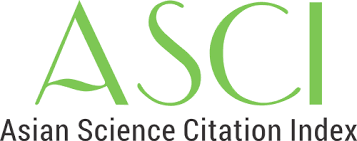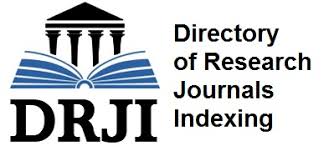Stress as a Catalyst: The Influence of Wellbeing and Emotional Intelligence on Employee Performance
Keywords:
Job stress, emotional intelligence, job performance, well-being, work culture, environmentAbstract
Background of the study: Recent World Health Organization (WHO) studies indicate that nearly 12 billion workdays lose value annually due to psychological burdens, resulting in a $1 trillion loss in productivity. The study's primary objective is to evaluate the integrated model of employee job performance regarding job stress, well-being, and emotional intelligence within mediated and moderated settings, utilising the JD-R theory framework.
Methodology: The study used 379 respondents from the service sector of Pakistan who opted for a purposive sampling technique. Responses were recorded using a closed-ended questionnaire with partial least square path analysis to analyse the data.
Results: Job stress increases employees' performance with well-being as a mediator, according to this study. In contrast, emotional intelligence had no substantial moderating effect. However, previous studies indicate that emotional intelligence helps employees handle pressure in desperate situations, improving performance.
Conclusions: The study showed that workplace dynamics are strongly interconnected, allowing managers to view job stress as a catalyst for improving employee performance while keeping an eye on well-being. Although emotional intelligence is not moderate, it can drive employees to meet their goals. Thus, managers may have long-term organisational success by adopting these findings and creating a workplace that emphasises productivity and human experience.
References
1. Babapour Chafi, M., Hultberg, A., & Bozic Yams, N. (2021). Post-Pandemic Office Work: Perceived Challenges and Opportunities for a Sustainable Work Environment. Sustainability, 14(1), 294. https://doi.org/10.3390/su14010294
2. Bakker, A. B., & Demerouti, E. (2007). The Job Demands‐Resources model: State of the art. Journal of Managerial Psychology, 22(3), 309–328. https://doi.org/10.1108/02683940710733115
3. Bakker, A. B., Hakanen, J. J., Demerouti, E., & Xanthopoulou, D. (2007). Job resources boost work engagement, particularly when job demands are high. Journal of Educational Psychology, 99(2), 274–
284. https://doi.org/10.1037/0022-0663.99.2.274
4. Barrero, J. M., Bloom, N., & Davis, S. J. (2023). The Evolution of Work from Home. Journal of Economic Perspectives, 37(4), 23–49. https://doi.org/10.1257/jep.37.4.23
5. Colligan, T. W., & Higgins, E. M. (2006). Workplace Stress. Journal of Workplace Behavioral Health, 21(2), 89–97. https://doi.org/10.1300/J490v21n02_07
6. Cooper, C. L., & Marshall, J. (1976). Occupational sources of stress: A review of the literature relating to coronary heart disease and mental ill health. Journal of Occupational Psychology, 49(1), 11–28. https://doi.org/10.1111/j.2044-8325.1976.tb00325.x
7. Cooper, R. K. (1997, December). Applying emotional intelligence in the workplace. Training & Development, 51(12), 31+. Gale Academic OneFile.
8. Deb, S. K., Nafi, S. Md., Mallik, N., & Valeri, M. (2023). The mediating effect of emotional intelligence on the relationship between employee job satisfaction and firm performance of small business. European Business Review, 35(5), 624–651. https://doi.org/10.1108/EBR-12-2022-0249
9. Demerouti, E., & Bakker, A. B. (2023). Job demands-resources theory in times of crises: New propositions. Organizational Psychology Review, 13(3), 209–236. https://doi.org/10.1177/20413866221135022
10. Elsamani, Y., Mejia, C., & Kajikawa, Y. (2023). Employee well-being and innovativeness: A multi-level conceptual framework based on citation network analysis and data mining techniques. PLOS ONE, 18(1), e0280005. https://doi.org/10.1371/journal.pone.0280005
11. Goleman, D., & Boyatzis, R. E. (2017). Emotional Intelligence Has 12 Elements. Which Do You Need to Work On?
12. Hanoch, Y., & Vitouch, O. (2004). When less is more: Information, Emotional Arousal and the Ecological Reframing of Yerkes-Dodson Law. Theory & Psychology, 14(4), 427–452. https://doi.org/10.1177/0959354304044918
13. Jain, A. K., Giga, S. I., & Cooper, C. L. (2009). Employee wellbeing, control and organizational commitment. Leadership & Organization Development Journal, 30(3), 256–273. https://doi.org/10.1108/01437730910949535
14. Jaiswal, A., Sengupta, S., Panda, M., Hati, L., Prikshat, V., Patel, P., & Mohyuddin, S. (2024). Teleworking: Role of psychological well-being and technostress in the relationship between trust in management and employee performance. International Journal of Manpower, 45(1), 49–71. https://doi.org/10.1108/IJM-04-2022-0149
15. Jamal, M. (1999). Job stress and employee well-being: A cross-cultural empirical study. Stress Medicine, 15(3), 153–158. https://doi.org/10.1002/(SICI)1099-1700(199907)15:3<153::AID-SMI809>3.0.CO;2-0
16. Jamieson, N. L., Bergin, A. J., Bordia, P., & Tucker, M. K. (2021). Supervisor strategies and resources needed for managing employee stress: A qualitative analysis. Safety Science, 136, 105149. https://doi.org/10.1016/j.ssci.2020.105149
17. Junça Silva, A., & Lopes, C. (2023). Cognitive and affective predictors of occupational stress and job performance: The role of perceived organizational support and work engagement. Journal of Economic and Administrative Sciences, 39(4), 1013–1026. https://doi.org/10.1108/JEAS-02-2021-0020
18. Khalid, A., & Syed, J. (2024). Mental health and well-being at work: A systematic review of literature and directions for future research. Human Resource Management Review, 34(1), 100998. https://doi.org/10.1016/j.hrmr.2023.100998
19. Mudrak, J., Zabrodska, K., Kveton, P., Jelinek, M., Blatny, M., Solcova, I., & Machovcova, K. (2018). Occupational Well-being Among University Faculty: A Job Demands-Resources Model. Research in Higher Education, 59(3), 325–348. https://doi.org/10.1007/s11162-017-9467-x
20. Mustafa, M. J., Vinsent, C., & Badri, S. K. Z. (2023). Emotional intelligence, organizational justice and work outcomes. Organization Management Journal, 20(1), 30–42. https://doi.org/10.1108/OMJ-08-2021-1322
21. Ning, L., Jia, H., Gao, S., Liu, M., Xu, J., Ge, S., Li, M., & Yu, X. (2023). The mediating role of job satisfaction and presenteeism on the relationship between job stress and turnover intention among primary health care workers. International Journal for Equity in Health, 22(1), 155. https://doi.org/10.1186/s12939-023-01971-x
22. Oakman, J., Kinsman, N., Stuckey, R., Graham, M., & Weale, V. (2020). A rapid review of mental and physical health effects of working at home: How do we optimise health? BMC Public Health, 20(1), 1825. https://doi.org/10.1186/s12889-020-09875-z
23. Oldham, G. R. (1976). Job Characteristics and Internal Motivation: The Moderating Effect of Interpersonal and Individual Variables. Human Relations, 29(6), 559–569. https://doi.org/10.1177/001872677602900605
24. Park, C. L., Kubzansky, L. D., Chafouleas, S. M., Davidson, R. J., Keltner, D., Parsafar, P., Conwell, Y., Martin, M. Y., Hanmer, J., & Wang, K. H. (2023). Emotional Well-Being: What It Is and Why It Matters. Affective Science, 4(1), 10–20. https://doi.org/10.1007/s42761-022-00163-0
25. Petrides, K. V., Pita, R., & Kokkinaki, F. (2007). The location of trait emotional intelligence in personality factor space. British Journal of Psychology, 98(2), 273–289. https://doi.org/10.1348/000712606X120618
26. Ramli, A. H. (2019). MANAGE OF JOB STRESS AND MEASURE EMPLOYEE PERFORMANCE IN HEALTH SERVICES. Business and Entrepreneurial Review, 18(1), 53–64. https://doi.org/10.25105/ber.v18i1.5307
27. Rosado-Solomon, E. H., Koopmann, J., Lee, W., & Cronin, M. A. (2023). Mental Health and Mental Illness in Organizations: A Review, Comparison, and Extension. Academy of Management Annals, 17(2), 751–797. https://doi.org/10.5465/annals.2021.0211
28. Sánchez-Álvarez, N., Extremera, N., & Fernández-Berrocal, P. (2016). The relation between emotional intelligence and subjective well-being: A meta-analytic investigation. The Journal of Positive Psychology, 11(3), 276–285. https://doi.org/10.1080/17439760.2015.1058968
29. Schaufeli, W. B., Bakker, A. B., & Van Rhenen, W. (2009). How changes in job demands and resources predict burnout, work engagement, and sickness absenteeism. Journal of Organizational Behavior, 30(7), 893–917. https://doi.org/10.1002/job.595
30. SCHWARZER, R., & REUTER, T. (2023). Manage Stress at Work Through Preventive and Proactive Coping. In Principles of Organizational Behavior (pp. 463–482). https://doi.org/10.1002/9781394320769.ch23
31. Verlinden, S., Wynen, J., Kleizen, B., & Verhoest, K. (2023). Blurred Lines: Exploring the Impact of Change Complexity on Role Clarity in the Public Sector. Review of Public Personnel Administration, 43(3), 479–503. https://doi.org/10.1177/0734371X221093573
32. Zhou, Y., Jin, T., & Zhang, L. (2024). Can the stress be managed? Stress mindset as a mitigating factor in the influence of job demands on burnout. Nursing Open, 11(9), e70028. https://doi.org/10.1002/nop2.70028
33. Herzberg, F. (1966). Work and the nature of man. World.
34. Luo, L. (1999). Work motivation, job stress and employees' well-being. Journal of Applied Management Studies, 8(1), 61.
35. Warm, J. S., Matthews, G., & Finomore Jr, V. S. (2018). Vigilance, workload, and stress. In Performance under Stress (pp. 131-158). CRC Press.
36. Dolan, S. L. (2023). A Kaleidoscope of Individual and Corporate Remedies to De-stress and Enhance Resilience and Well-being at Work. In De-Stress at Work (pp. 161-208). Routledge.
37. Priya, J., Machani, P., Agyei, I. T., Suryanarayana, N. V. S., Thandayuthapani, S., & Lourens, M. (2023). Effects of performance and target pressure on the psychological well-being of corporate employees. Journal for Re-Attach Therapy and Developmental Diversities, 6(8s), 218-227.
38. Ryff, C. D., & Keyes, C. L. M. (1995). The structure of psychological well-being revisited. Journal of personality and social psychology, 69(4), 719.
39. Ryff, C. D. (1989). Happiness is everything, or is it? Explorations on the meaning of psychological well-being. Journal of personality and social psychology, 57(6), 1069.
40. Batool, A., Ayub, U., Fazal, S., Ahmed, I., Laghari, M. S. N., & Batool, A. (2023). The Impact Of Occupational Stress With The Mediating Factor Of Workplace Stress On Employees’ Job Performance: A Case Of Banking Sector Of Pakistan. Journal of Positive School Psychology, 1664-1679.
Downloads
Published
Data Availability Statement
Data can be made available, if needed. Reader can email at aziz.ahmed@pill.org.pk for queries.
Issue
Section
License
Copyright (c) 2024 Archives of Management and Social Sciences

This work is licensed under a Creative Commons Attribution 4.0 International License.








